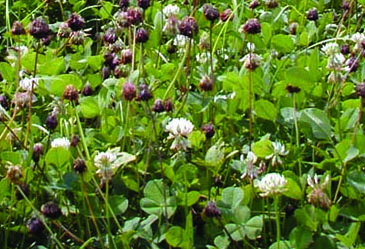By Jeanette Castanon
Neches white clover (Trifolium repens L.) is a synthetic variety of intermediate white clover with 147 parent plants selected for early and profuse flowering in combination with high leaf-to-stem ratio, and high potential forage production.
Parent plants originated from five breeding populations that had been previously selected for early flowering through one or two cycles of recurrent selection.
Parentage of Neches traces to five diverse germplasm sources: two plant introduction lines identified with superior perennial persistence; a local ecotype collection from Smith and Anderson counties in Texas; and two breeding lines from USDA-ARS that incorporated multiple sources of pest resistance and persistence.
Neches flowers early compared to La S-1 and slightly earlier than Durana. Neches is in full bloom by mid-April at Overton, TX. Leaf size of this new cultivar is 20% larger than Durana. Forage yield is generally equal to La S-1 and other check white clover cultivars.
Management and recommendations
- Best adapted to bottomland and high-moisture soils.
- Not recommended for upland soils.
- Test soil and follow lime and fertilizer recommendations.
- Soil pH should be 6.0 to 7.5.
- Plan acreage needed (0.5 to 0.8 acre/cow+calf).
- Graze or hay warm-season grasses to about two inch height before planting.
- Disturb sod with light disking and plant 3-4 lbs/acre.
- White clover will provide grazing from April to July.
- Will also provide about 125 lb nitrogen/acre that will be available to warm-season grasses through nutrient cycling.
- White clover is a perennial but often does not persist under hot, dry summers in the SE U.S.
- Often managed as a reseeding annual.




